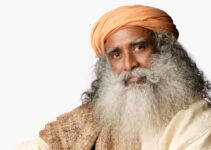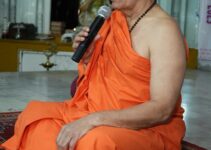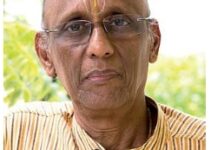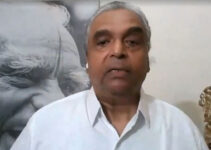Nigamananda Paramahansa early life
Swami Nigamananda Paramahansa was born on August 18, 1880, in a Bengali Brahmin family in Kutabpur. He was named Nalinikanta at birth, lost his mother at 13, and suffered depression. He was married to a thirteen-year-old in 1897. He lost his wife in 1901, which changed his life forever. He tried to learn more about Advaita from a Vedic guru to meet his wife. He was an Indian yogi and Guru who commanded over Vedanta, tantra, yoga, and bhakti.
Nigamananda Paramahansa books
He achieved Siddhi in tantra, Gyan, yoga, and prema, and after gaining experience in these, he penned down some great Bengali books.
- Brahamcharya Sadhana
- Yogi Guru
- Gyani Guru
- Tantrika Guru
- Premik Guru
Nigamananda Paramahansa Gurus
- Bamakhepa: He took dikhshya from him, who had suggested Nalinikanta get the knowledge of Advaita from a Vedantic guru.
- Guru Satchidananda Saraswati: Paramahansa looked for a jnani teacher in 1902. At Pushkar, in Rajasthan, he met a Guru, Satchidananda Saraswati. He envisioned Saraswati as the sadhu who had given him the Tara mantra in his dream. Nalinikanta became his pupil and studied the ideas of Brahma sutras, Vedanta, and Brahman (god as the formless one). Satchidananda initiated him into renunciation, and as a result, he changed his name to Nigamananda.
- Sumeru Dasji: He met another “yoga guru” named “Sumeru Dasji” in 1903. He studied yoga with Das’s assistance. He welcomed Nigamananda as one of his disciples.
Nigamananda Paramahansa ashrams
The final 14 years of Nigamananda’s life were spent at Puri, where he found a brilliant disciple named Durga Charan Mohanty. Durga Charan became a Nigamananda disciple and wrote many books on his master’s life. He also established hundreds of ashrams in Odisha. Swami ji passed away on November 29, 1935, in Calcutta. In remembrance of Nigamananda, his devotees attend yearly assemblies (sammilani) and other ceremonial events. His ashram at Halisahar, Saraswata Matha (previously Shanti Ashram) in Jorhat and Sundarbans, has become a pilgrimage place.
Nigamananda’s mission
His mission’s motto was to spread Sanatana dharma and serve everyone equally. It also focused on leading an ideal family life.
Philosophy and teachings
After much work, Nigamananda achieved Savikalpa samadhi in Poush 1904. The fundamental teachings of Nigamananda were that Guru and that are one and that students should uphold the values of Lord Shankar (the Gyan) and Lord Gaurang (path of bhakti). Shankar and Gaurang provide a sweet combination of Gyan and Bhakti to lead the right way. His teachings include
- Avatar and Sadguru
- Sadguru, Jagadguru and God
- Order of Spiritual Attainments
- Reconciliation of Monistic and Dualistic Pursuits
- The Guru combines the individual self (the Atman) and the cosmic self (Paramatman or Brahman).
- A Sadguru never curses anyone.
- The Guru and the disciple are inseparable.
- To achieve something in life, Guru’s grace is a must.
- The Guru does everything for the disciple, hoping that one day, the disciple will get spiritually enlightened.






